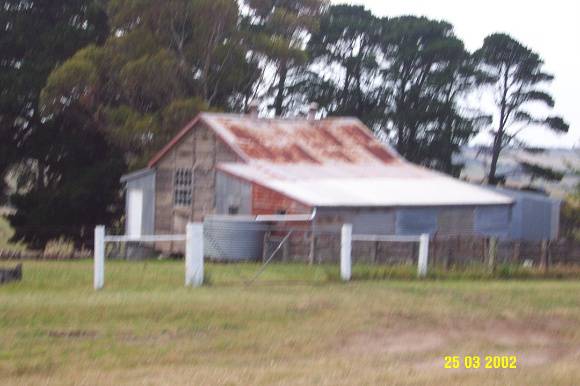| Back to search results » | Back to search page » |
|
STATE SCHOOL NO. 4362 AND RESIDENCE (FORMER)
Other NameKONONGWOOTONG NORTH STATE SCHOOL LocationZig Zag Road, KONONG WOOTONG NORTH VIC 3315 - Property No 124
File Number1678LevelStage 2 study complete |
|
Statement of Significance
What is significant?
State School No. 4362, Zig Zag Road, Konongwootong North is a complex of timber buildings and gardens dating from 1929. The construction of the complex was triggered by the surge in population in the district following the subdivision of one of the area's great pastoral estates for Soldier Settlement after the First World War. The school house is a one roomed school building, typical of its era in form and style. The interior of the school is essentially intact, and little altered from the original. The single storey timber teacher's residence, built in 1933, has been altered somewhat. In the Southern Grampians Shire it is the only residence to survive in situ, adjacent to the school. The school and residence retain the remnants of an extensive garden, which contains formal landscaping elements and botanical specimens which are typical of the 1930s.
How is it significant?
The former State School No. 4362 and teacher's residence at Konongwootong North is of historical, social and architectural significance to the Southern Grampians Shire and the State of Victoria.
Why is it significant?
The complex located at State School No. 4362, Konongwootong North is historically significant as a rare surviving example of a rural school and residence, with formal landscaping, and various associated structures, which retain a high degree of integrity. The school complex provides a tangible link to the Soldier Settlement era, a particular phase in the long history of the pastoral industry in the area. The land on which the Konongwootong North school sits has its origin in the earliest squatting run, with the arrival of the Whyte Brothers, pioneers of the Coleraine district. The subsequent subdivision of the land at various times culminated in the creation of small landholdings acquired by returned servicemen following the First World War. The school is a physical expression of the population boom which resulted from Soldier Settlement, and which created social and economic prosperity hitherto and subsequently unknown in the area.
The school has social significance as an expression of the collective aspirations and dedication of the soldier settler families, typified by the work of the voluntary committee and their pressure on local politicians.
The school complex has architectural significance as a rare surviving example of a typical rural school facility dating from the Interwar period. The complex retains a high degree of integrity in its exterior and interior fabric, style and materials.
Group
Education
Category
School - State (public)




